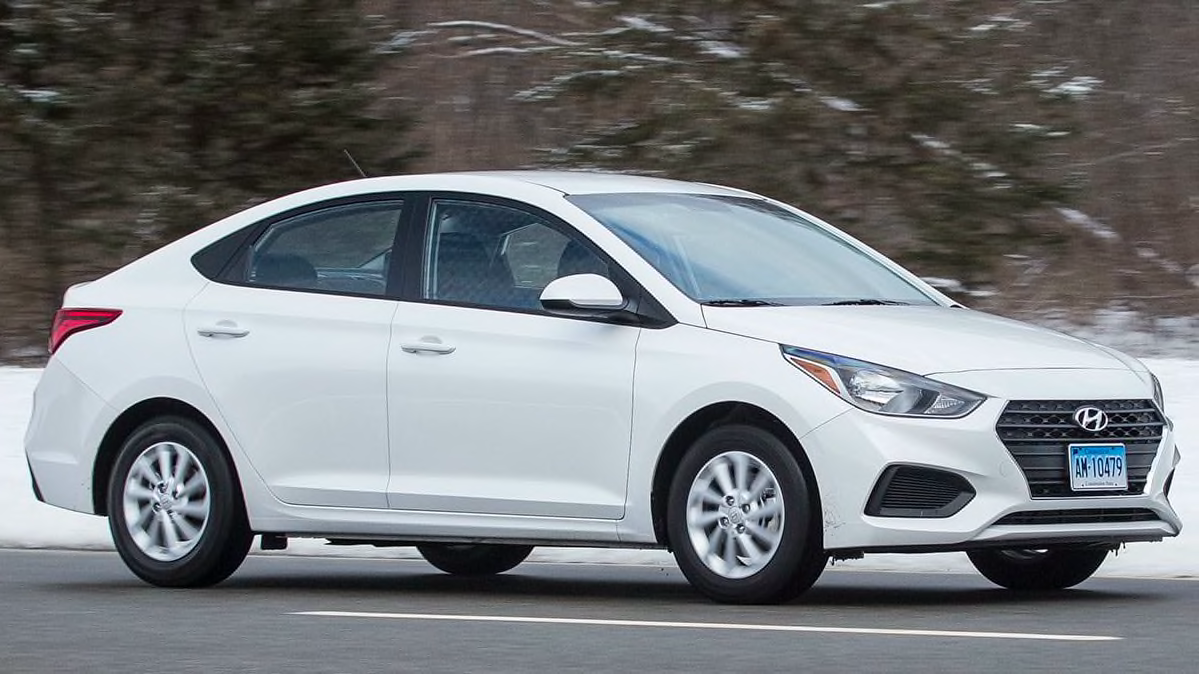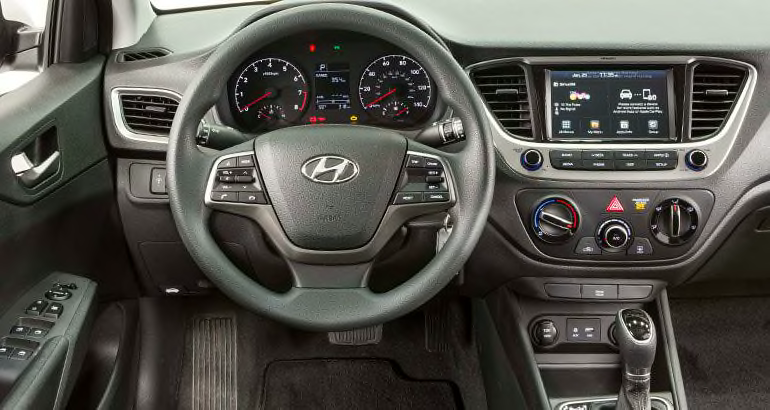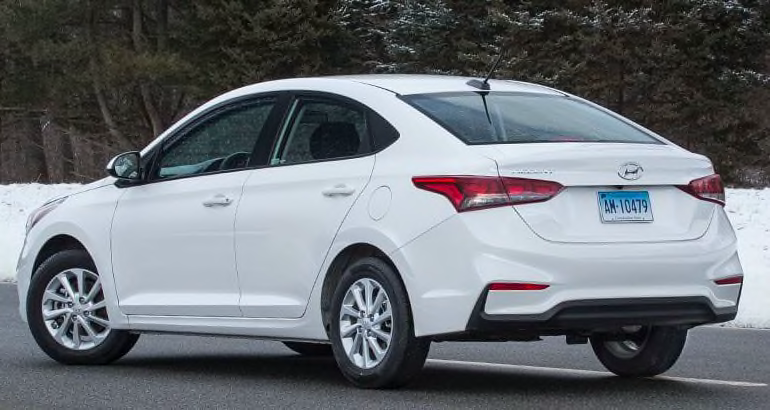
Tiny, subcompact cars are known for compromise, with loud interiors and feeble engines the norm. Hyundai is trying to stand out in this class by giving buyers more with its redesigned Accent: more passenger space, more features, and better fuel economy.
The 2018 Accent is slightly longer and wider than the outgoing car, and it rides on a longer wheelbase. Hyundai says the engine and transmission are more efficient. The hatchback body style has been dropped from the lineup. This redesigned car is set to compete with the Chevrolet Sonic, Honda Fit, Nissan Versa Note, and Toyota Yaris iA, as well as its own sister car, the Kia Rio.
We bought a midlevel SEL for testing. Here are our initial impressions of the Accent, as it accumulates the break-in miles needed to begin its journey through more than 50 tests at the CR Auto Test Center.
What we bought: 2018 Hyundai Accent SEL
Drivetrain: 1.6-liter, 130-hp, four-cylinder engine; six-speed automatic transmission; front-wheel drive
MSRP: $17,295
Destination fee: $885
Options: $255
Total cost: $18,435
How It Drives
There's nothing about the Accent that will blow a driver's hair back—or even slightly muss a hair or two. It doesn't do anything poorly, mind you, but the driver will never forget that this is merely basic transportation.
The engine and transmission are largely carried over from the previous model, but Hyundai says both have been reworked in the interest of efficiency. The Accent's 1.6-liter four-cylinder sends 7 fewer hp to the front wheels than last year's model; it's down to an even 130 hp.
The engine has adequate oomph to motor around town, and it stays relatively quiet in most situations, but the driver really needs to stand on the gas pedal to climb hills and to merge on highways. When pushed hard, the engine gets buzzy and coarse-sounding after it passes 5,000 rpm. The six-speed automatic transmission shifts smoothly most of the time, but occasionally it holds gears for too long, which only makes the engine noise worse.
Hyundai's efficiency work appears fruitful, because the Environmental Protection Agency-rated fuel economy has gone from 30 mpg combined to 32 mpg. City and highway fuel economy are now pegged at 28 mpg and 38 mpg, respectively. We will conduct our own fuel-mileage testing in the weeks to come.
The Accent's handling is similar to its acceleration in that it gets the car through corners in a stable and secure manner, but it's a pretty bland experience. The driver will never be inspired to pick up the pace on a twisty bit of tarmac in way the Ford Fiesta, Honda Fit, or Toyota Yaris iA can stimulate. We felt the last Accent's ride was overly stiff, and the new one isn't much better, still exhibiting a busy and choppy nature on secondary roads.

Inside
There isn't anything terribly flashy about the Accent's cabin, but it is one of the most user-friendly cockpits around.
Controls are clear and easy to decipher at a glance, with large knobs and buttons that make sense. Even the 7-inch touch-screen infotainment system in our SEL test car (the base SE comes with a 5-inch screen) makes life easy, and it comes with Android Auto and Apple CarPlay compatibility.
The cabin is filled with hard plastic trim—a swath of cloth on the door panel is one of the few soft areas in the car—but the pieces fit together well.
The Accent has a roomy driving position, and its slim roof pillars contribute to good all-around visibility. The cloth front seats are basic and feel a bit underpadded, but they have good side bolstering to hold you in place through corners. Lower-back support is lacking, though, making the Accent more suited to short journeys than to all-day road trips.
Front headroom is excellent and the left footrest is nicely placed, but the hard plastic door armrest is an uncomfortable place to perch an elbow.
Rear-seat headroom is tight even for average-sized adults, and toe space under the front seats is a bit squished. But for those passengers who can fit back there, the comfort level is decent for the class, thanks in part to a reasonable amount of thigh support. The rear seats fold down in an easy fashion, providing a large and highly useful trunk pass-through.
Safety & Driver Assist Systems
The top Limited trim of the Accent comes standard with forward-collision warning (FCW) and automatic emergency braking (AEB), but these two important advanced safety systems aren't available at all on the base SE and midtier SEL. CR believes FCW and AEB should come standard on all cars.

Bottom Line
So far, we've found the Accent to be a perfectly unobjectionable subcompact sedan, even if it lacks pizzazz. After we finish our break-in miles, the little Hyundai will head into formal testing—so be sure to check back here to see how it stacks up against its class.
Food for thought: If you're a shopper considering a new car in the $15,000-to-$20,000 range, you can find great deals in the compact class (meaning one segment bigger), enabling you to get a little more for your money. Because the Accent is new, discounts will be rare, and not that big. However, our analysts have found that shoppers can buy a Hyundai Elantra or Toyota Corolla for Accent money right now.
Update: See the complete Hyundai Accent road test.



















